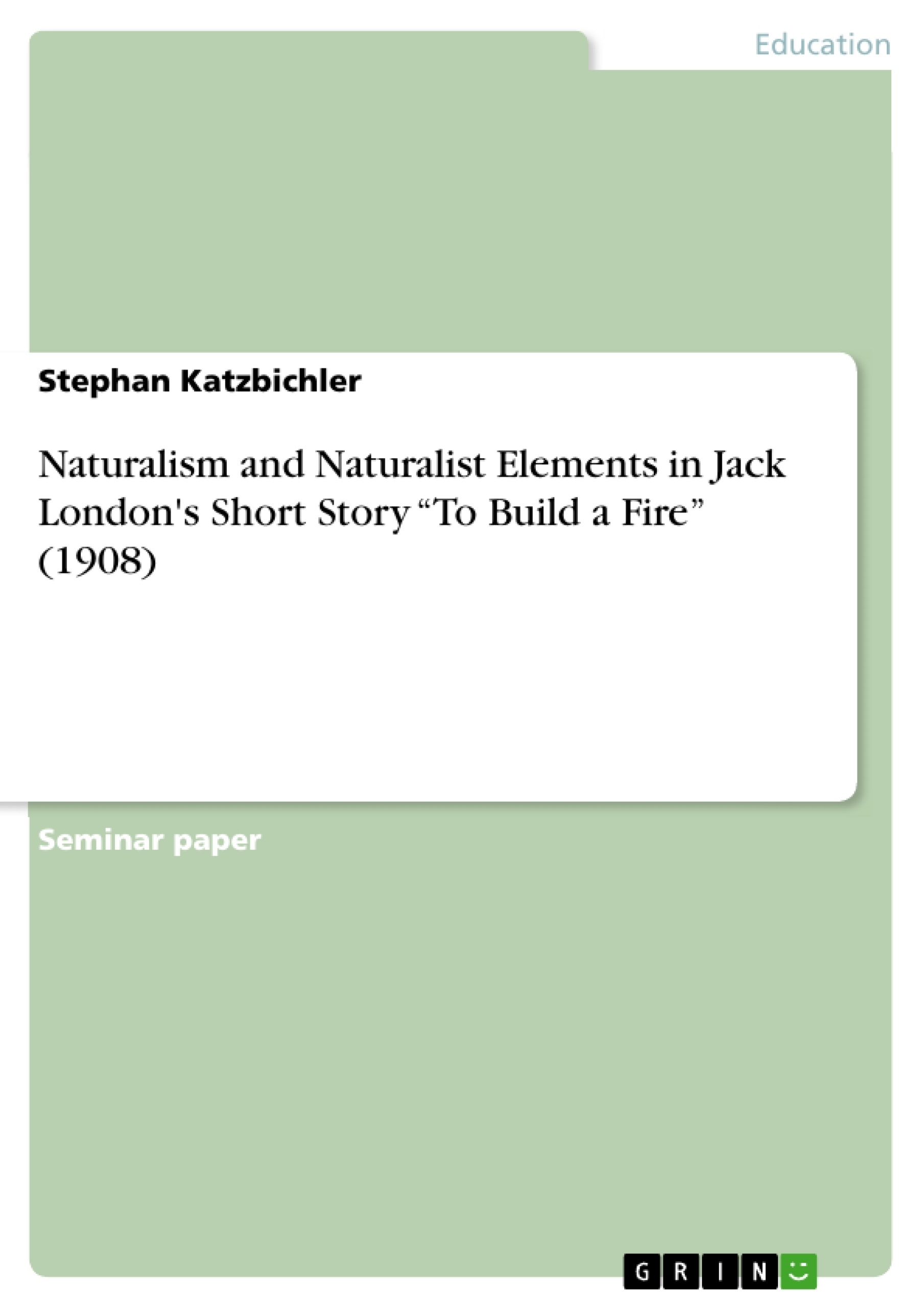The short story “To Build a Fire” written by Jack London was first published in 1908 and is seen as a “masterpiece of short fiction” (Reesman 39) and “his best short story” (Peterson 3). Jack London demonstrates in “To Build a Fire” a “strong narration, fresh fictional subject, and ability to create atmosphere” (Nuernberg XXXII). The story is furthermore claimed as his “most often cited example for naturalism” (Reesman 39), which came up in the 1880s and lasted until the 1940s. This literary movement is seen as an outgrowth of Realism with the addition of pessimistic determinism and was influenced by Social Darwinism (cf. Campbell). Thus the most characteristic for naturalist stories is the fact that people are helpless victims of unchangeable natural laws, a harsh environment and their inner “animal drives”. These attributes and the naturalist typical „man vs. nature‟-theme can also be found in “To Build a Fire” and other stories by Jack London, which is one of the most famous representative of naturalism. In the following pages the typical characteristics of stories written during the literary movement naturalism will be explained. Afterwards these elements will be pointed out in Jack London‟s story “To Build a Fire”. Last but not least, the question, whether “To Build a Fire” can be indicated as an example for naturalism will be discussed and finally answered.
Table of Contents
1 Introduction
2 Naturalism (1880s - 1940s)
2.1 History
2.2 Characters and Setting
2.3 Themes and Conflicts
2.4 Narrative Techniques and Naturalist Style
3 Jack London: “To Build a Fire” (1908)
3.1 Plot
3.2 Naturalist Elements
3.2.1 „Man vs. Nature‟-Theme and Determinism
3.2.2 Wilderness and Nature
3.2.3 Irony and Narrative Techniques
4 „To Build a Fire“ as a Naturalist Short Story
5 Works Cited



